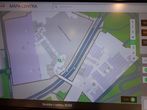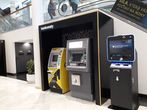Freedom - Bitcoin does not have any boundaries, anyone with access to a computer and the Internet can receive, own and send bitcoins. No approvals or intermediaries are needed to record, realize and authorize your payments like banks do with your regular money. The software for the transaction realization and the bitcoin network operation is also free and opensource. The currency is not emitted by any government and it’s not otherwise regulated (although some countries are trying to, as a matter of principle, it is impossible).
Safety - Nobody can take your bitcoins, if you don’t give them your key. Only the key owner (bitcoin recipient) may control any part of the bitcoin that somebody has sent him. This feature has also its problematic consequences. Bitcoins may not be confiscated, for example, in case it gets proved that the bitcoins are derived from criminal activity, or if sent by mistake they cannot not be returned.
Privacy - Nobody needs to know you own any of the existing bitcoins unless you disclose your part of the key – address to which the bitcoins are bound.
Speed - The information that somebody is sending you bitcoins will reach you within a couple of 5 seconds. You can be sure that you have control of your bitcoins within a couple of minutes.
Price - Sending bitcoins anywhere around the world (over the Internet) costs almost nothing.








































